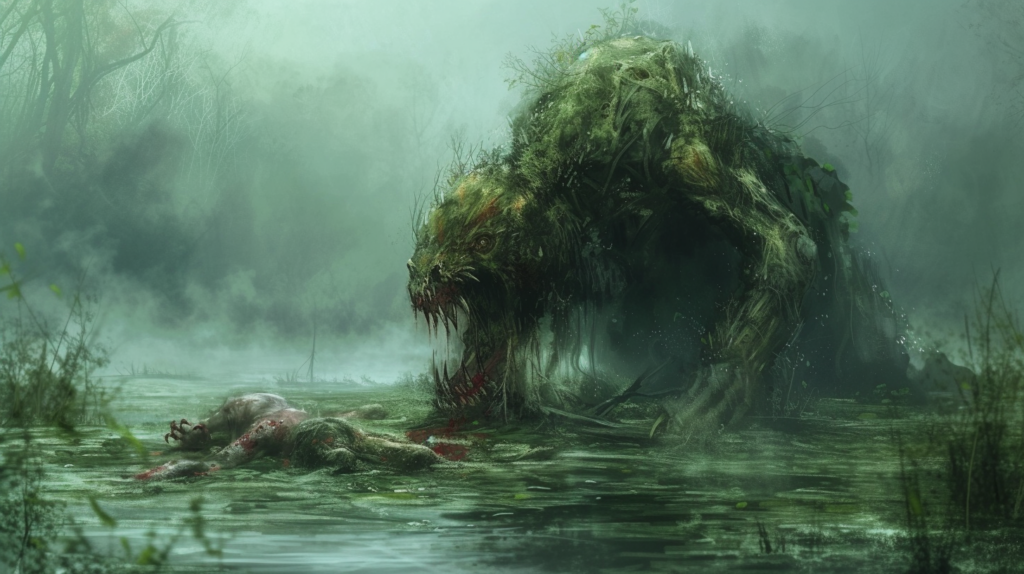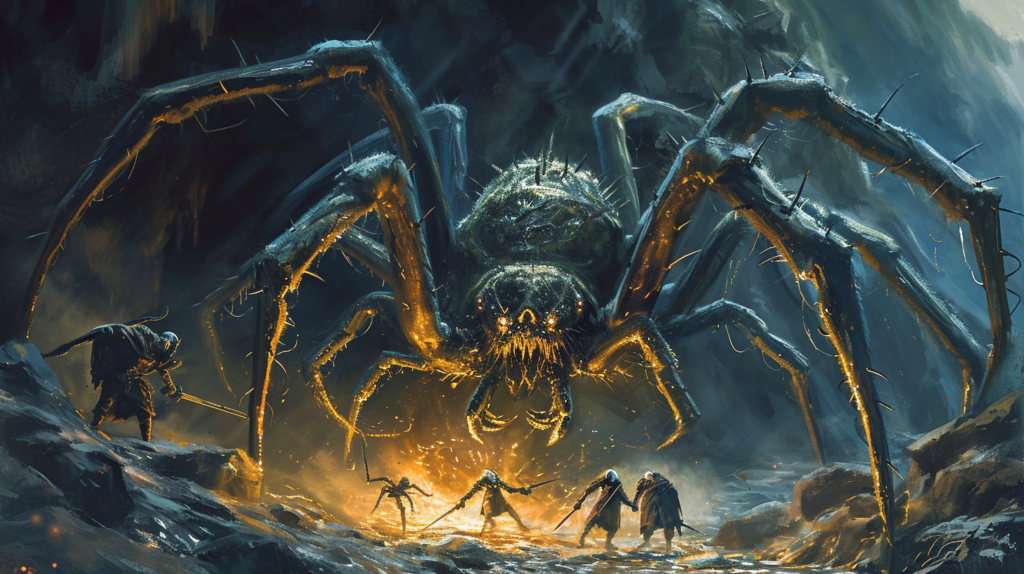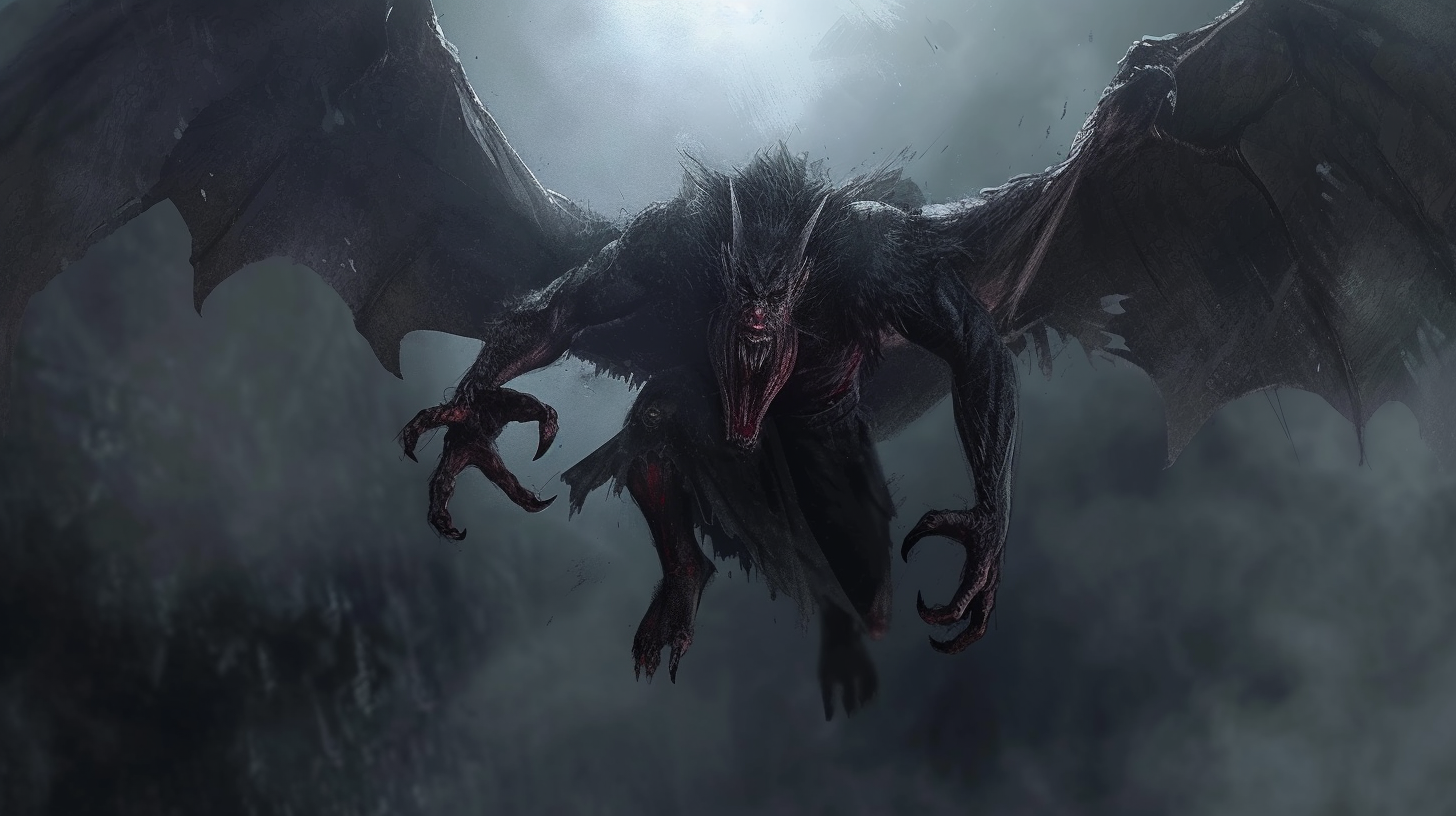Played The Witcher 3: Wild Hunt and now you want D&D Witcher-monsters? Look no further, we’ll tell you how to make them yourself.
I love The Witcher 3: Wild Hunt, and I’m not alone. Millions of people have praised the game for all kinds of reasons. One of those reasons (at least, in my opinion) is the monsters. Not just the design, but everything surrounding the monsters. The storytelling that introduces a monster and the way that people speak about it, the folklore, the combat that feels like a puzzle. So how can we recreate that experience in D&D?
If you want to add in the element of searching for clues and hunting the beast, look to the homebrew rules that I’ve created. But once the players find the monster and they have to battle it, how can we make that experience more ‘Witchery’? YouTuber Zee Bashew has us covered.
Making D&D Witcher-monsters: main rules
The main tenets are as follows:
- To make the monsters feel more deadly and creepy
- To better connect the monsters with the setting
- To give the players the sense that they’re hunting a boss that must be figured out (like a puzzle)
Why? Because this is an apt description of the monsters in The Witcher. They are horrifying or disgusting looking, and a regular untrained person stands no chance at even a single drowner, let alone a more advanced creature. The monsters are usually described to you by civilians who have seen them from a distance or who have found the remains of their neighbor. It’s as if they’re a myth, and they’re sometimes wrongly connected to some other bit of folklore. And Geralt usually can only defeat them using specific materials and tactics.
D&D Witcher-monsters: technical alterations
This is the technical list of requirements needed for creating a Witcher-monster in D&D. These are essentially the seven steps or required alterations/additions you need to make, to create a Witcher-like creature. Read the steps below, and then we’ll go through them.
- Deadliness (average party level + 3 CR)
- Health (halve it)
- Add resistances and immunities
- Vulnerability
- Lure
- Weakness
- Research
Deadliness: challenge rating
The rule of thumb is to take the average level of the group and to add 3 to it. That is the CR of the monster you should be aiming for. Now since I love creating my own monsters, I don’t necessarily stick to this exact rule. I prefer to look at the damage output of my players: how much damage do all of their strongest attacks do? How much average ‘regular’ damage do they do if they spend their turn simply using their main attack? If you don’t want to look at all of that, then simply use the CR-system.

Health: halve it
The advice is to half the HP of the monster. The idea is: the monster will be very resilient with its resistances, so you don’t want to make it a slog by having a big HP pool. While this is true, think of the best case scenario for the players. If they know everything about the monster, could they simply wipe it within one round with the amount of damage they do? Because if that’s the case, you might want to increase the HP a little, increasing the odds of a second round occurring.
Add resistances and immunities
You want the monster to be like a Death Star. Nearly impossible to defeat, except for that one weak spot. Zee Bashew says to add one specific resistance per CR, and to add one immunity or general resistance per 3 CR. On top of existing resistances and immunities. I personally ignore that last bit, I create my monster from scratch and stick to the amounts as written here. From CR 9 onwards, Witcher-like monsters will have nine resistances and immunities or general resistances. That means they will resist most types of damage. This is why I stick with the formula as given.

Vulnerability: a way to damage it
Give the monster one specific vulnerability, like a specific damage type such as ‘fire’ or ‘piercing’. Zee Bashew adds a great tip: you can make it more specific or folklore-y. For example: “the hammer of a betrayer”, “a sword wet with the blood of a hen”, “magic of elves”, or a school of magic. Just be mindful that magic users already have the benefit of having a more diverse arsenal. So try to give melee and ranged characters an edge with certain monsters as well.
Lure: controlling the monster
A D&D Witcher-monster should have a way to coax it out. Because monsters in The Witcher aren’t mystical being but more like horrific animals, they have specific desires for food. So give them a lure, something that they want. But if want the lure to be a bit more mystical and fitting with a less grounded setting, think of the story behind the monster and make it fit. I’ve created a monster that seemed to be some defender of the forest that protected it from forest fire. So he could be lured with an open flame in the forest.

Weakness: not damage-related
Ensure that the monster can be disturbed by something. We’re not looking for ways to deal damage, like a vulnerability. We want to create a way for the players to have new or different interactions with the monster. Hitting a weak spot will make it go prone or become disoriented. Or if the players drink a certain antidote, they are immune to its poison. Or if its hit with a certain damage type, then it can’t teleport until the end of its next turn. Usually the weakness takes away or damages one of the monster’s strongest elements.
Research: grounding the monster
Zee Bashew mentions this and gives an example of how he does it, but not thoroughly. The idea is that the players should have a way of researching the monster, finding clues about it. Because I love all of Zee Bashew’s suggestions for making D&D Witcher monsters, I created my own homebrew about hunting them. I’ve aimed to make it simple, yet involved enough so the players will have to pay attention. Read about it here.

D&D Witcher Monsters: how to design them
All of the rules and the explanations of Zee Bashew steer towards a certain direction. The main difference between a regular D&D monster and a Witcher-verison, is the specific ways in which they can be defeated. Some DMs might protest, claiming it’s a form of railroading. To me it’s not different than using silver on a werewolf or driving a wooden stake through the heart of a vampire.
This linear path to destroying them means you need to create interesting hurdles that work off of each other. You want to make it powerful and give it features that make it hard to destroy. And then you’ll create a specific way to utterly destroy it. A flying monster that can swiftly swoop down and dodge attacks in the air. But it is brought down by extremely loud noises. Or a terrifyingly scary night-creature that can’t handle sunlight.

D&D Witcher-monsters: dare to intimidate
To me, part of the fun is creating a monster that will obviously be very dangerous once the players see it in action. And even if they know its weakness and lure, they still should be scared of applying it, fearing the chance it might not work as they thought. For example: a big bouldering beast that dashes towards players, bashing them with its horns for almost half their HP. Yes, hitting it with a silver arrow will stop it dead in its tracks. But who is willing to be the bait?
Also think of chaining actions, bonus actions, reactions, et cetera. Add conditions or other effects to regular attacks, and then have other actions to react to those circumstances. A simple example is knocking a player prone with a regular attack if it hits, and then being able to use a bonus action to attack all downed players. Or giving your spider-monster advantage on webbed players. To me, that’s the most fun. We’re giving the players explicit ways of defeating the monsters, so let’s not be afraid to intimidate them a little!

